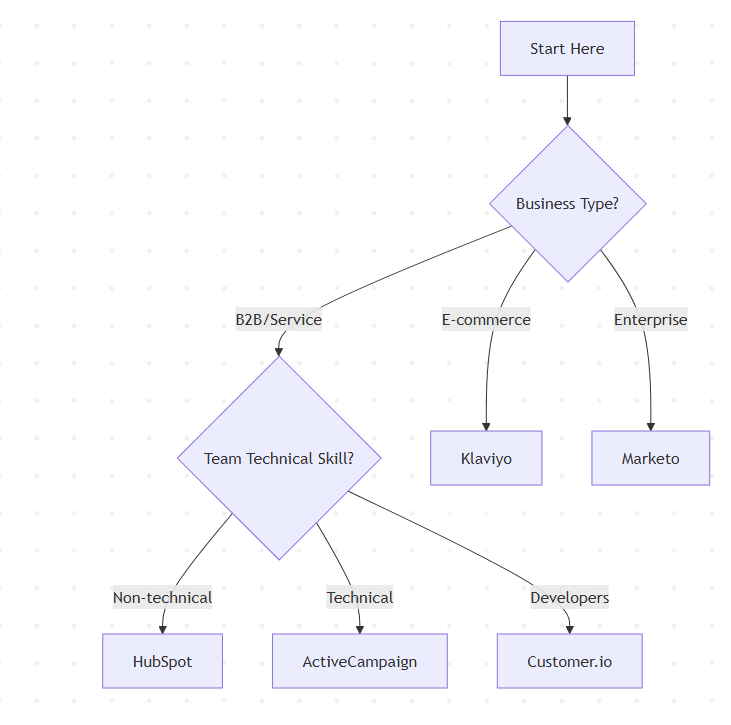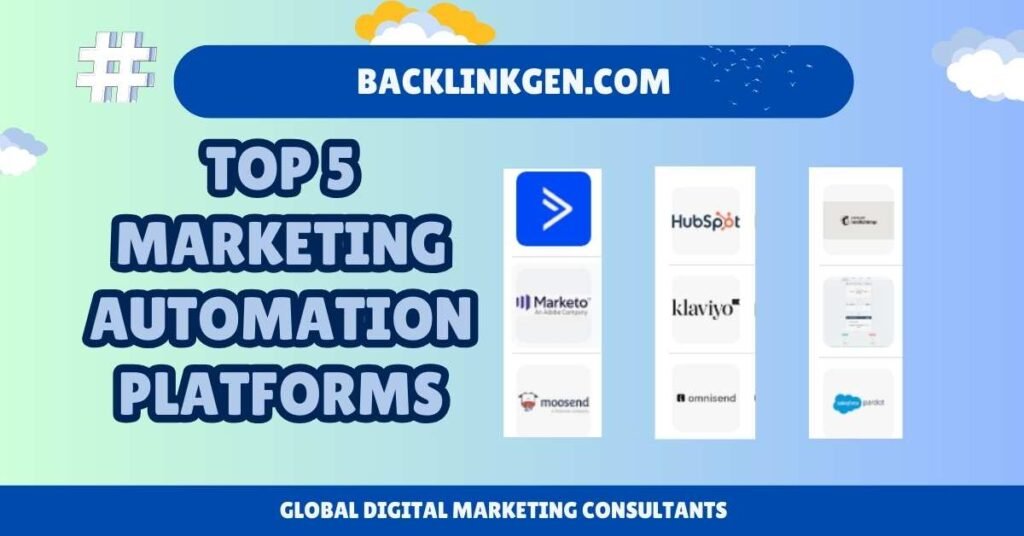A 15-Year Veteran’s Unbiased Review
By Amit, Digital Marketing Strategist (15+ Years, 50+ Platforms Tested)
After 15 years of scaling IT consultancies and e-commerce brands on lean budgets, I’ve learned one brutal truth about marketing automation:
“The most expensive platform isn’t the one with the highest price tag—it’s the one you buy but never fully use.”
I’ve personally implemented, migrated, and sometimes painfully abandoned automation tools across $18K ad budgets and $2M revenue businesses. The difference between success and wasted spend comes down to choosing the right engine for your specific vehicle.
Here’s my unbiased breakdown of the top 5 marketing automation platforms, who they’re really for, and how to avoid costly implementation mistakes.
❌ The 3 Automation Mistakes That Cost Me $12,000
Before we dive in, learn from my expensive mistakes:
- The Overkill Trap: Buying Marketo for a 3-person startup. We used 5% of features at 100% of the cost.
- The Integration Nightmare: Choosing a “cheap” platform that couldn’t connect to our CRM, creating data silos.
- The Scaling Wall: Outgrowing a simple tool within 6 months, forcing a painful and costly migration.
🏆 My Top 5 Marketing Automation Platforms Reviewed
1. HubSpot: The All-in-One Growth Suite
Best For: B2B & B2C companies wanting an integrated system (CRM, marketing, sales, service).
My Hands-On Experience:
I’ve deployed HubSpot for IT consultancies where tracking the lead-to-client journey is complex. The seamless connection between the CRM and marketing automation is its superpower.
Strengths:
- Unified Platform: No integration headaches. Contacts, deals, and marketing interactions live in one place.
- Ease of Use: The most intuitive interface I’ve used. Your team will be building workflows in days, not months.
- Powerful CRM: The free CRM is a Trojan horse—it gets you in, then you see the value of upgrading.
- Ecosystem: Massive app marketplace and knowledge base.
Weaknesses:
- Pricing Tiers: Costs can escalate quickly as you need more contacts and features. The jump from Starter to Professional is significant.
- E-commerce Limitations: Less sophisticated than Klaviyo for pure e-commerce segmentation.
Pricing: Starts with a powerful Free plan, paid plans from $50/month (Starter) to $1,600/month (Enterprise).
Amit’s Verdict: The best overall choice for most B2B and service-based businesses. Start free, upgrade as you grow.
2. Klaviyo: The E-commerce Powerhouse
Best For: E-commerce brands (especially Shopify) focused on maximizing customer lifetime value.
My Hands-On Experience:
I used Klaviyo to help an appliance e-commerce brand increase their email revenue by 137% in 90 days. Its native understanding of e-commerce data is unmatched.
Strengths:
- Product & Purchase Data Syncing: Automatically segments customers based on what they bought, browsed, or abandoned.
- Pre-built Flows: Best-in-class abandoned cart, browse abandonment, and post-purchase sequences.
- SMS Marketing: Deeply integrated SMS flows that complement email perfectly.
- Predictive Analytics: Forecasts customer lifetime value and churn risk.
Weaknesses:
- B2B Limitations: Not designed for complex lead nurturing cycles or sales teams.
- Learning Curve: The depth of e-commerce features can be overwhelming for beginners.
Pricing: Free up to 250 contacts, then usage-based pricing (scales with email sends).
Amit’s Verdict: The undisputed king for e-commerce. If you sell products online, start here.
3. ActiveCampaign: The Automation Power User’s Dream
Best For: Marketers who want sophisticated automation without enterprise price tags.
My Hands-On Experience:
I implemented ActiveCampaign for a SaaS client that needed complex if/then branching based on user behavior. Its visual automation builder is incredibly powerful.
Strengths:
- Advanced Automation: The most sophisticated visual workflow builder in its price class.
- Site Tracking: Triggers automations based on specific page visits and user behavior.
- CRM Included: Robust CRM functionality built-in, not an afterthought.
- Value for Money: More automation power per dollar than any other platform.
Weaknesses:
- Interface Complexity: The learning curve is steeper than HubSpot or Mailchimp.
- Template Design: The email editor isn’t as drag-and-drop friendly as competitors.
Pricing: Starts at $29/month (Lite) to $259/month (Enterprise).
Amit’s Verdict: The best value for sophisticated automation on a budget. Perfect for tech-savvy marketers.
4. Marketo (Adobe): The Enterprise Behemoth
Best For: Large enterprises with dedicated marketing operations teams.
My Hands-On Experience:
I consulted with a Fortune 500 company using Marketo to manage millions of leads across global campaigns. It’s powerful but requires serious resources.
Strengths:
- Scale: Handles massive databases and complex global campaigns effortlessly.
- Account-Based Marketing (ABM): Enterprise-grade ABM features.
- Integration Ecosystem: Connects with every enterprise system imaginable.
- Analytics: Deep, customizable reporting and attribution.
Weaknesses:
- Cost: Expect minimum commitments of $20,000+ annually.
- Complexity: Requires dedicated marketing operations expertise.
- Implementation: Can take 3-6 months for full deployment.
Pricing: Enterprise-level pricing (starts around $20,000/year).
Amit’s Verdict: Only consider if you have 10,000+ leads/month and a dedicated marketing ops team. Overkill for 99% of businesses.
5. Customer.io: The Developer-Friendly Choice
Best For: Tech companies with development resources who want complete customization.
My Hands-On Experience:
I helped a SaaS startup use Customer.io to create hyper-personalized onboarding sequences based on real-time product usage data via API.
Strengths:
- API-First Design: Send data from your product to trigger incredibly precise workflows.
- Flexibility: Build any automation logic you can imagine.
- Data Integrity: Excellent at handling complex customer data models.
- Journey Reporting: Visualize how customers move through your automations.
Weaknesses:
- Technical Barrier: Requires developer resources for maximum value.
- No Built-in CRM: You need to bring your own data source.
- Pricing: Can get expensive as your data volume grows.
Pricing: Usage-based pricing starting at $100/month.
Amit’s Verdict: Perfect for product-led growth companies with technical teams. Avoid if you lack developer resources.
📊 Side-by-Side Comparison Table
| Platform | Best For | Starting Price | Key Strength | Learning Curve |
|---|---|---|---|---|
| HubSpot | All-in-One Growth | Free | Integration & Ease of Use | Low |
| Klaviyo | E-commerce | Free | E-commerce Data & Flows | Medium |
| ActiveCampaign | Power Automation | $29/month | Advanced Workflows | Medium-High |
| Marketo | Enterprise | ~$20,000/year | Scale & ABM | High |
| Customer.io | Tech Companies | $100/month | API Flexibility | High |
🧭 How to Choose: My 5-Point Decision Framework
Ask these questions before spending a dollar:
- What’s Your Business Model?
- B2B/Service: HubSpot or ActiveCampaign
- E-commerce: Klaviyo
- Product-Led SaaS: Customer.io or HubSpot
- What’s Your Team’s Technical Skill?
- Non-technical: HubSpot
- Some technical skill: ActiveCampaign
- Dedicated developer: Customer.io
- What’s Your Growth Timeline?
- Rapid scaling: Choose a platform that scales with you (HubSpot, Klaviyo)
- Stable growth: ActiveCampaign offers great long-term value
- What’s Your Integration Needs?
- Want everything in one place: HubSpot
- Have existing systems: Ensure API compatibility
- What’s Your True Budget?
Remember to factor in: Platform cost + Implementation time + Training costs

🚀 My Implementation Blueprint: Go-Live in 30 Days
Week 1-2: Foundation
- Import and clean your contact list
- Set up basic segmentation (e.g., customers vs. leads)
- Create your email templates and brand guidelines
Week 3-4: Automation Building
- Build your 3 most critical workflows:
- Welcome series for new subscribers
- Lead nurturing sequence
- Customer onboarding/welcome
Week 5-6: Testing & Optimization
- Test every workflow with a small segment
- Set up analytics and conversion tracking
- Train your team on basic functions
“The best marketing automation platform isn’t the one with the most features—it’s the one your team will actually use to create genuine customer conversations.”
– Amit
Still unsure? Contact Us for Consultation
About Amit: With over 15 years of hands-on experience implementing marketing automation for businesses of all sizes, Amit focuses on practical, ROI-driven solutions. Having worked with budgets from $18K to millions, he believes the right tools should enable growth, not complicate it.

